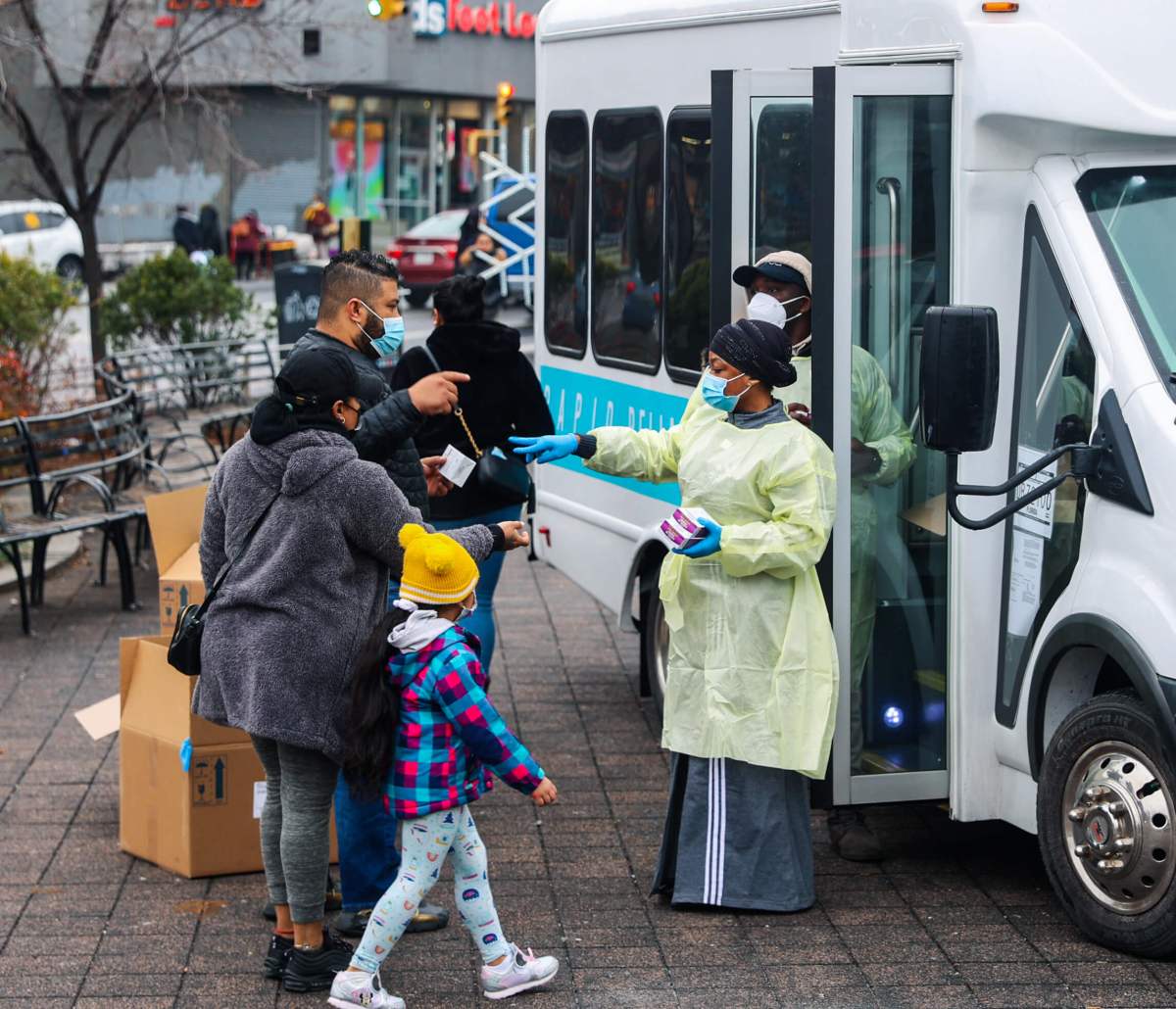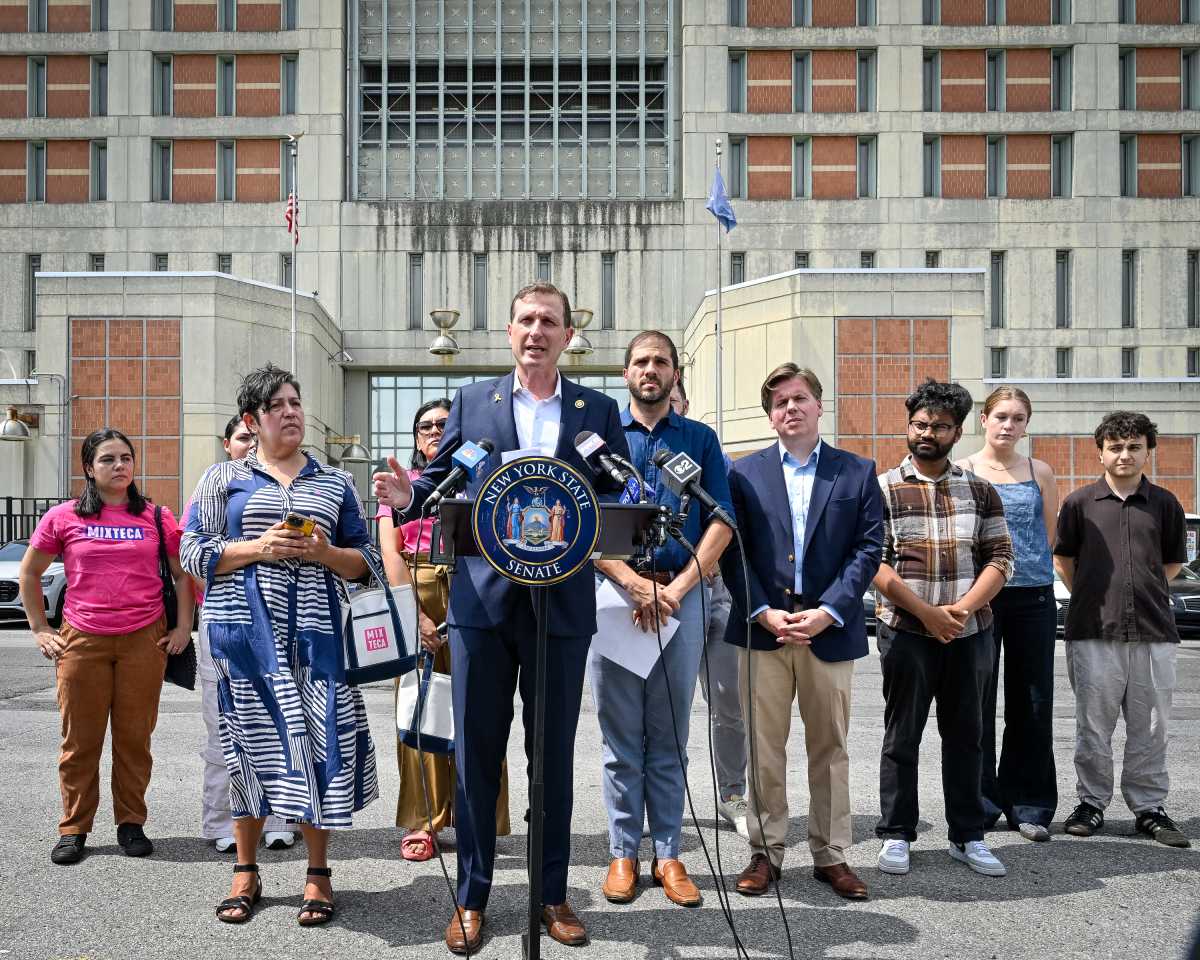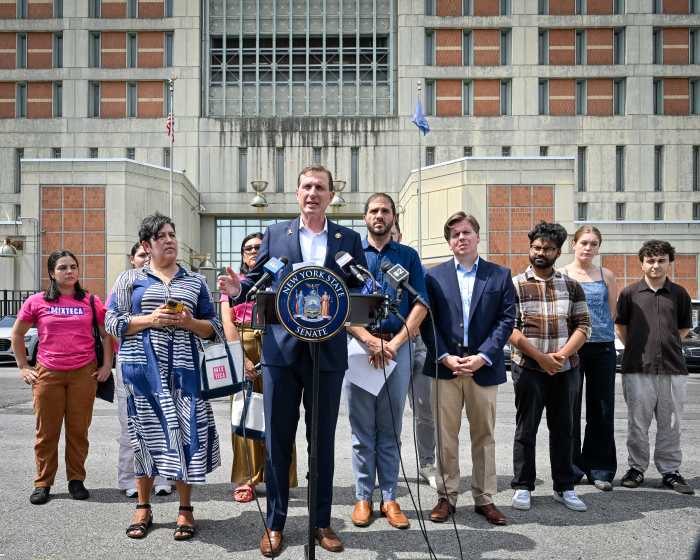The MTA blazed into the post-pandemic record books on 4/20 Thursday as the New York City subway system saw more than 4 million riders in a single day for the first time since March 12, 2020.
Approximately 4,002,961 paid rides were recorded in the subway turnstiles on April 20, 2023, the highest number in three years, the MTA and Governor Kathy Hochul announced Friday. It was also a record-setting day for the MTA’s OMNY contactless fare payment system, which set a single-day subway record of 1,699,914 taps, or 42.5% of all paid rides.
The latest post-pandemic ridership record for the city’s subways occurred a month after the previous record of 3.94 million riders rode the trains on March 16.
Thursday’s record marked the latest milestone in the city’s post-COVID transit system recovery; it has taken more than three years for ridership to get this close to pre-pandemic levels.
It also comes at a critical time when the MTA has been seeking hundreds of million dollars in extra relief from the city and state governments to close budget deficits incurred as a result of ridership losses during the pandemic. Budget talks in Albany remain ongoing, and it was reported Friday that Hochul and the state Legislature are nearing a deal on an transit spending plan.
“The MTA is the lifeblood of this city, and New York State has made critical investments in our subways to improve the rider experience,” Hochul said in a statement. “Surpassing four million riders for the first time since the start of the pandemic is a testament to the resiliency of New Yorkers and the importance of supporting the nation’s largest transit system.”
MTA Chair and CEO Janno Lieber was quick to remind about the sacrifices the MTA made during the spring of 2020, the height of the pandemic, when subways continued running at nearly full service even as ridership plummeted 90% in order for essential workers to continue reporting to work.
Subway ridership plummeted as COVID-19 struck the city and officials began telling New Yorkers to stay home and avoid mass transit if possible. Subway riders began trickling back in once the strictest lockdown measures began to be lifted.
But three years later, with virtually all COVID-era restrictions in the past, the MTA is still struggling to bring back all the riders it once had. The more than 4 million riders reported on April 20 still represents only 72.8% of the ridership seen on March 4, 2020, according to MTA ridership data. The agency has struggled to surpass two-thirds of pre-pandemic ridership as many former passengers embrace working from home.
“At the height of the pandemic, ridership dropped by 90%, but we kept the system running full tilt to make sure that essential workers could get to hospitals, pharmacies, grocery stores and distribution centers,” Lieber said in the statement. This record is a testament to the resilience of New Yorkers and a reminder that mass transit is the lifeblood of this city.”
The good ridership news continued on the MTA’s commuter rails. Metro-North Railroad set a new three-day ridership record (Tuesday through Friday) of 193,111, which represents 73.5% of the baseline ridership last seen in February 2020.
And the Long Island Rail Road has carried more than 200,000 riders on 16 days since the opening of Grand Central Madison station, on Feb. 27. Between April 9-15, the LIRR reported a 7-day average ridership of 168,726, the best 7-day average since March 2020.
With reporting by Ben Brachfeld
Read more: Decomposing body discovered in Brooklyn apartment



































